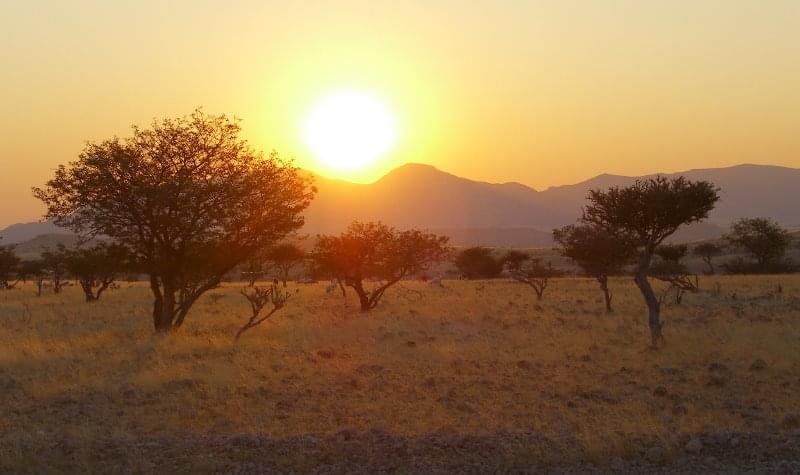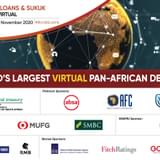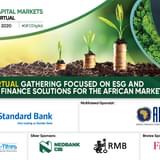Bond & Loans speaks with Megan McDonald, Head of Investment Banking at Standard Bank about the region’s markets and why, when it comes to their performance, there is cause for (cautious) optimism.
What have been some of the bright spots for the Bank in Africa this year?
Our annual results released in March this year were very positive from a banking perspective. We have three divisions: the personal business banking, corporate and investment banking, and wealth. We did well in personal, corporate and investment banking, with our headline earnings only reduced slightly by our investments in the insurer Liberty. But if you look at our return on equity, growth has been strong overall. Four years ago, we were looking at roughly 10% ROE, and this doubled to 20% last year – above our internal target. We feel there is a lot of upside in the business because most of the additional capital that we had to hold by virtue of Basel III has now kicked in, so we are not anticipating large amounts of additional regulatory capital requirements going forward.
 Regionally, we are looking at what many are starting to call a “two-speed” Africa, where you are seeing East Africa doing fairly well, a lack of growth in southern Africa and the typical distinctions between commodity and non-commodity players one might expect, given current pricing trends.
Regionally, we are looking at what many are starting to call a “two-speed” Africa, where you are seeing East Africa doing fairly well, a lack of growth in southern Africa and the typical distinctions between commodity and non-commodity players one might expect, given current pricing trends.
One of the bright spots that was perhaps a bit unexpected was that our South Africa business did very well last year against a backdrop of a very challenging economic and political environment. Some of the big landmark transactions for us last year involved taking some of our South African clients into international markets. For instance, we advised South African restaurant owner Famous Brands Ltd. on its acquisition of Gourmet Burger Kitchen in the UK, which was quite transformational for the company because it was its first acquisition into the UK and speaks to an emerging theme of South African corporates looking for growth offshore. With our strong presence in South Africa combined with the presence that we have in the UK, the US and Asia, we very well positioned to advise our clients on this next phase in their transformation and growth.
The improving commodities outlook has also been a bright spot, and we are starting to see more activity in the oil & gas sector; we have also seen some movement in the telecoms sector and in mining. We have had a much more positive start to 2017 when compared to the same period the year before.
Overall, we are pleased to see such positive momentum – particularly given increasing global political and economic risk, with things like Brexit and uncertainty around US policy – which we haven’t seen for the last three or four years. We are cautiously optimistic.
One of the biggest themes we picked up on last year was a shift in reliance to the local capital markets for funding. Do you expect this trend to continue?
We have always been a big proponent of the importance of local currency markets in Africa because of the FX challenges and risks posed by borrowing large amounts in foreign currency when revenue is earned in local currency. We believe the amount of foreign currency debt raised in Africa, if it continues to grow materially, could pose a threat to the financial stability of the region. What we anticipated, and what we saw, is that many of our clients for the very first time were asking us for more local currency tranches, and we saw many more clients coming to the local bond markets as well. Due to a number of the risk factors alluded to earlier, which are and will continue to weigh on foreign exchange rates, we believe we will see that trend continue into 2017. We also believe this is being matched by lending capacity – the ability of banks to be able to lend in local currency is much greater than what it was five years ago, when most large entities tapping either the bond or loan markets for liquidity would look to hard currencies. During that period, we have also seen an evolution in the local institutional investor base in many of the continent’s largest economies, which has also helped further develop the local currency markets. That is another strong theme we expect to continue in the years to come.
Reform was a major theme across the continent last year, particularly in economies that were hit hard by commodity and oil price declines. Are you optimistic about some of the more pronounced reform efforts being undertaken in countries like Nigeria and Ghana?
It's always a tricky question because as commodities rise, traditional reliance on those resources tends to creep back in. We believe that reforms will be carried through but their timing may take longer than anticipated. For example, in Nigeria, we have no doubt that the wide-reaching reforms will happen – but they are taking much longer than initially thought. There is cause for optimism in Zambia, where there is serious talk of removing a raft of subsidies and a strong understanding of the need for reform.
It is also important to look at these reforms within the context of election cycles. In Zambia, where the current administration was just recently voted in, there is real momentum behind the reforms – which is backed by strong political capital. Contrast that with Nigeria, where elections are not likely for the next few years and a good deal of political capital has already been eaten into. Kenya is also very interesting, with elections coming up in August and ambitious reforms – particularly around farming and infrastructure – on the cards.
Ethiopia has recently overtaken Kenya to become East Africa’s fastest growing economy, though it still remains relatively underbanked – largely due to regulatory restrictions, it seems. What is the scale of the opportunity there for an institution like Standard Bank? Has there been any movement on the regulatory front?
The paradox in Ethiopia has always been that there is this huge growth opportunity there, but many have been prevented from realising that opportunity due to the stringent regulatory environment there. It has kept many of the international players out. But over the last 12 months, we have seen much more momentum there – and the likelihood of reform in Ethiopia is pretty substantial. We have had much more engagement with local entities in government and the private sector, which have reached out to us for our views on capital market liberalisation. When it will happen, we can’t really say – but we are heartened by the fact that there is much more attention being paid to the need to liberalise the regulatory environment and open the country up to international players.
Standard Bank’s Ivory Coast unit recently announced plans to expand in the country and bolster its CFA franc franchise. What’s the long-term plan for the bank in West Africa and what kind of challenges do you think the bank is likely to encounter growing there?
We are present in 20 countries in Africa, but when we looked at our footprint we appeared to be missing out on one of the larger growth areas in the francophone region, particularly Ivory Coast and Senegal; with growth rates of around 5-6%, they clearly stand out among the pack, followed closely by countries in East Africa. We decided to upgrade to a full banking license in Ivory Coast, which is the platform for us to do business in Francophone Africa, and will allow us to evaluate whether we will grow our presence in other countries in the region. So, we are using it as the initial platform that will allow us to determine whether or not we continue expanding throughout the region.
When you grow your operation organically, rather than focus on buying operations that are already established, you can sometimes run the risk of assuming that you can automatically translate the successes you have had developing operations in other regions by replicating that strategy in a new region. But that is the wrong way to go about it. It is extremely important to understand the local environment, from a business, regulatory and cultural perspective; our model at its core is about putting people on the ground who can really understand the lay of the land and the ley players in a particular market and its environment. This is not a big bang approach, but a very carefully thought-out strategic approach that will see us support certain sectors and add value where we see opportunities to do so.
What kinds of opportunities are you seeing in Islamic finance in Africa? There seemed to be a great deal of excitement a few years ago, but some of that seems to have subsided.
There was a great deal of excitement in 2014 following the South African National Treasury’s sukuk, and part of the strategy there was to create a benchmark and show that this can be done, with the hope of encouraging more issuances in the region. There was a flurry of interest with lots of sovereigns looking at it, but three years later we simply haven’t seen the deals materialise. With sukuk come many challenges. Is the liquidity there? Absolutely. Is the construct or framework tried and tested? Absolutely. The challenge is that for many countries, the specific legal framework needed to support the sukuk structure requires amendments to legislation; that’s part of the reason why it took South Africa three years to take its sukuk to market. But that same challenge remains for other countries looking at it; amendments that would allow the sovereign to sell and lease-back an asset is a requirement for the asset class, typically. For many countries, the challenge can often be political, exacerbated by what the average person could interpret as the government favouring a certain class of investor over others; many countries also lack a detailed asset registry, another requirement for sukuk.
Many sovereigns also question whether it is worth putting in the work and political capital required to make all of these legislative changes when they can simply go and issue a Eurobond instead.
Additionally, because it’s a new market, many potential issuers may be hamstrung by tenor restrictions. Most eligible issuers require longer dated funding, which is not necessarily available in the Islamic capital markets.
Overall, I believe we will see more sukuk come to market, in part because Middle Eastern liquidity directed at Africa is growing; but it will not be a flurry of issuances as was originally anticipated. We are optimistic about the asset class.









